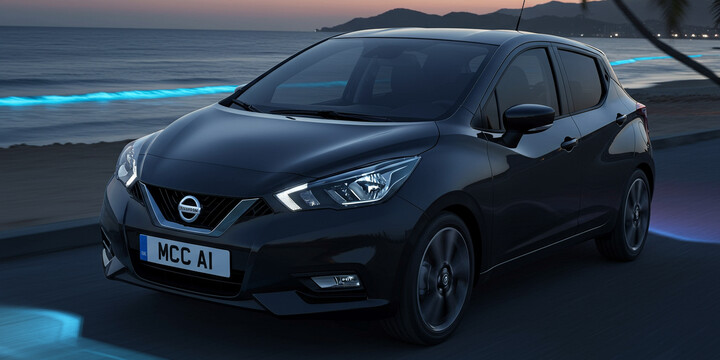
NISSAN MICRA (2017-23) 5DR HATCHBACK 1.0 IG-T 92 SS EU6 VISIA
The NISSAN MICRA (2017-23) 5DR HATCHBACK 1.0 IG-T 92 SS EU6 VISIA is a popular and practical city car well-suited for urban driving, commuting, and first-time drivers. As a compact hatchback, it offers easy manoeuverability and parking—making it a perfect choice for those navigating busier streets or tight parking spaces. Known for its reliability and fuel efficiency, the MICRA VISIA provides an affordable and low-cost option for budget-conscious drivers and small families alike. The model's modern design, combined with user-friendly features, makes it a standout among rivals in the small car segment.
What sets this version of the Nissan Micra apart is its efficient 1.0-litre petrol engine, which strikes a good balance between performance and economy. With a typical valuation of around £13,066 in the used car market, it remains an attractive choice for those looking for a dependable hatchback. The NISSAN MICRA (2017-23) 5DR HATCHBACK 1.0 IG-T 92 SS EU6 VISIA is well-regarded for its ease of driving, low running costs, and practical design, making it a consistent favourite among used car buyers in the UK. Whether you're a city commuter, a new driver, or someone seeking a reliable daily driver, this Nissan Micra offers a well-rounded and accessible option.

average use

The most recent recorded mileage for the sampled Nissan Micra (2017-23) 5-door hatchback 1.0 IG-T 92 SS EU6 Visia vehicles indicates that all of them are within the 0 to 10,000 miles range, representing 100% of the sample. This suggests that these vehicles are generally very low mileage, which could imply they are relatively new or have been minimally used. This is notable for potential buyers or owners interested in low-mileage vehicles.

vehicle values

The provided private sale valuation data for the Nissan Micra (2017-23) 5DR Hatchback 1.0 IG-T 92 SS EU6 Visia indicates that the majority of vehicles are valued within the £14,000 to £15,000 range, accounting for 50% of cases. There are also equal proportions—each at 16.7%—for vehicles valued between £10,000 to £12,000, specifically in the £10,000–£11,000, £11,000–£12,000, and £12,000–£13,000 ranges. This suggests a significant concentration of private sale prices around the £14,000–£15,000 mark, with smaller but notable groups in lower price brackets. The data reflects a clustering of valuations, with a prominent peak in the higher range, potentially indicating middle-of-the-road market values for this model in the current private sale market.

production years

The data indicates that all surveyed Nissan Micra models of the specified type, manufactured between 2017 and 2023, in this sample are from the year 2022. This suggests a strong concentration of their production or registration within that particular year, reflecting perhaps a popular model year or a recent refresh. It might also imply that newer models have not yet entered the market or are less represented in the data sample.

colour popularity

The data indicates that all sampled Nissan Micra (2017-23) vehicles of the specified model and trim are painted in white, accounting for 100% of the observed vehicles. This suggests that white is the sole or overwhelmingly dominant color choice for this particular vehicle type in our dataset, highlighting a strong preference or limited variation in the main paint colour among these models.

ownership cycle

The data indicates that there has been only one registered keeper for the Nissan Micra (2017-23) 5-door hatchback 1.0 IG-T 92 SS EU6 VISIA model across the sample. This suggests that the vehicle has likely remained with the initial owner since registration, pointing to a potentially low turnover rate or high vehicle retention. Such consistency could be of interest to buyers seeking a car with a well-maintained and stable ownership history.

engine choices

The data indicates that all vehicles of the Nissan Micra (2017-23) 5DR Hatchback 1.0 IG-T 92 SS EU6 VISIA model are equipped with a 1.0-liter engine and utilize petrol as their primary fuel type. This suggests a consistent specification across the entire sample, reflecting standardization for this model in terms of engine capacity and fuel type.












